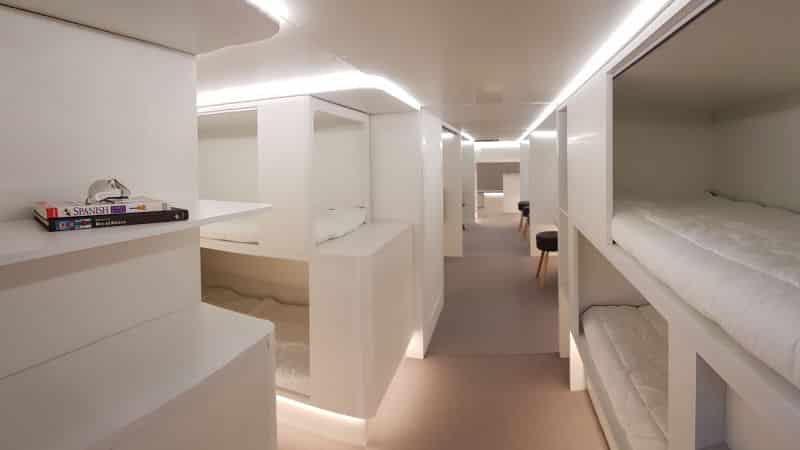It has been said that only two things are certain: death and taxes. Add to that list “uncomfortable airline seating.” Seriously, when was the last time you felt truly comfortable on an airplane? Design firms and airlines are both tinkering with modern airline seats. The results are mixed.
The Good
Airbus is fighting back against the airlines’ obsessive need to squeeze more passengers into smaller spaces. Their idea? Modular beds which can be added to the cargo hold area on long-haul flights. Since business and first class passengers already have space to lay down, the pods would be the rare amenity targeted at coach class. The beds would be located over the cargo hold of planes, and they could be removed for flights with more cargo. The sleeping pods would be rentable by the hour, presumably for far less than it costs for a first class seat.
The Bad
Italian manufacturer Aviointeriors knows you are tired of not having any leg room. The company has now demoed a new design for a seat that lets people stretch so far they are nearly standing up. The company unveiled the SkyRider 2.0 at the Aircraft Interiors Expo 2018 in Hamburg. Its first design for the seat was rejected by the FAA in 2010. The new seat has plenty of padding and lets passengers get upright without leaving their seats.
The SkyRider 2.0 weighs half as much as the standard coach seat. Vertical seats have been a concept for the last decade, but they haven’t taken off. Critics contend the seats could be problematic because they lack space under the seats. Aviointeriors says the seats are for short flights. However, they resemble the kinds of stand-up seats which prevail on roller coasters. Think that 90 second ride is uncomfortable? Then why not try it for a two-hour flight?
Pass.
The Ugly
Ever wanted some hard data on how much smaller seats are in coach class? The Consumers Union, a watchdog group, first started tracking airline seat size in 1985. The four biggest American airlines (Delta, Southwest, United and American) cut legrooms substantially. For example, in 1985, Southwest had as much as 35 inches of seat room. Economy seats on United in 1985 gave 36 inches. None of the airlines went below 31 inches of legroom.
But now, things have changed. None of the four American airlines offered above 33 inches in 2018. American, Delta and United are as low as 30 inches.
Across the pond, the Telegraph started comparing seat size in 1990. On long-haul flights, Qantas, Virgin and Lufthansa all gave economy class riders a solid 34 inches. Now only Quantas offers over 31 inches. Virgin can go as low as 29 inches.
On short flights, dozens of airlines stick with 29 inches per seat. A few have dropped them even further, to 29 inches.
Back in 2012, Aviointeriors thought they could help both riders and airlines by having passengers sit saddle-style, which shrunk the leg room even further. Just one look reveals how heinous this setup is.
Have you ever wanted to spend time sitting in the laps of your fellow passengers? No?
Hard pass.



